A Fine 17th Century William and Mary Kingwood Strongbox or Coffre Fort, Circa 1690
£10,900
Follow Us
A Fine 17th Century William and Mary Kingwood Strongbox or Coffre Fort, Circa 1690
A William and Mary Kingwood/Princes oyster strongbox or Coffre Fort, circa 1680-1700, England. Adorned with highly decorative gilt brass strapwork and decorated in knife-cut oysters of kingwood, this box is fit for the most discerning of collectors.
The large gilt brass shield-shaped clasp opens on a push-spring release to reveal a box interior lined in rosewood with two drawers below and two secret compartments hidden within the frieze.
Once the fall is open you will find two drawers lined in Kingwood. Two secret compartments and boxes are discreetly hidden above each drawer.
The box appears decorative, but it was also very difficult to break open or steal. It has a strong lock to the centre and two bolts concealed in the sides so that it could be screwed down into floorboards if necessary or that of a horse-drawn carriage. Strong boxes veneered in oysters of Princewood such as this were luxury objects.
The cabinet-makers who would have constructed and veneered the carcase apparently sold them, often using tropical hardwood veneers, and mounted it with sets of mounts, handles and locks bought in from brass founders. The elaborate veneering and conspicuous gilded brass mounts show that the appearance of these objects was important.
Thomas Pistor, of Ludgate Hill, London worked with the renowned cabinetmaker Gerrit Jensen. Gerrit Jensen supplied a walnut-veneered ‘strongbox’ to Colonel James Grahame in 1668, Levens Hall. It is recorded that Thomas Pistor’s remaining stock was sold off post his death in 1711, included ‘three fine Princes wood strongboxes’.
The present example relates almost exactly to a strongbox held in the Victoria & Albert Museum. Accession Number: W.10-1951.
Condition
Wear consistent with age and use. A superb and original example of very good colour and patination.
Dimensions
Height: 8.47 in (21.5 cm)
Width: 14.18 in (36 cm)
Depth: 9.26 in (23.5 cm)
PREVIOUSLY SOLD
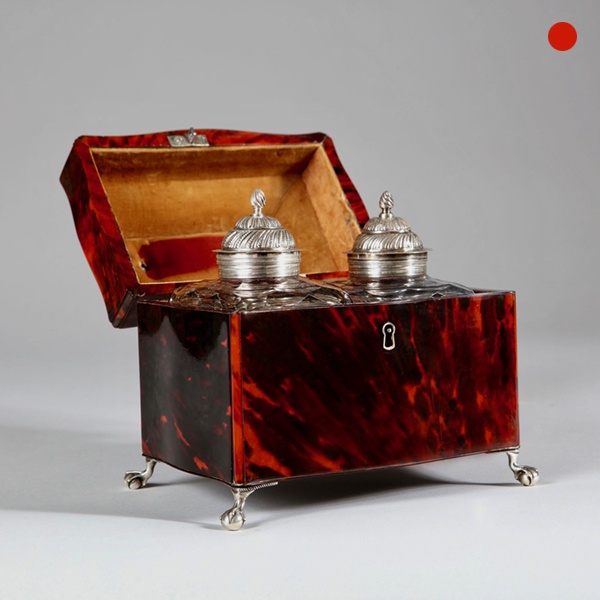
George III Red Tortoiseshell Tea Caddy
A rare exquisitely shaped red tortoiseshell tea caddy, serpentine to all four faces with a pagoda top. The beautifully worked silver handle depicts the Prince of Wales feathers and it is raised on fine ball and claw feet of silver.

19th-Century Quarter-striking Carriage Clock by Leroy, Paris
The gilt-brass, so-called corniche case has bevelled glass panels on all sides so that the movement is entirely visible. It is surmounted by a shaped carrying handle. The white enamel dial has a Roman chapter ring, with Arabic five-minute and minute divisions.

Louis XV Style French Lantern
A superb large French brass lantern of Louis XV style, 19th century. The five light chandelier within a cylindrical lantern cast with scrolling acanthus, shells and vase-shaped finials with serpentine glazed panels, fitted for electricity.
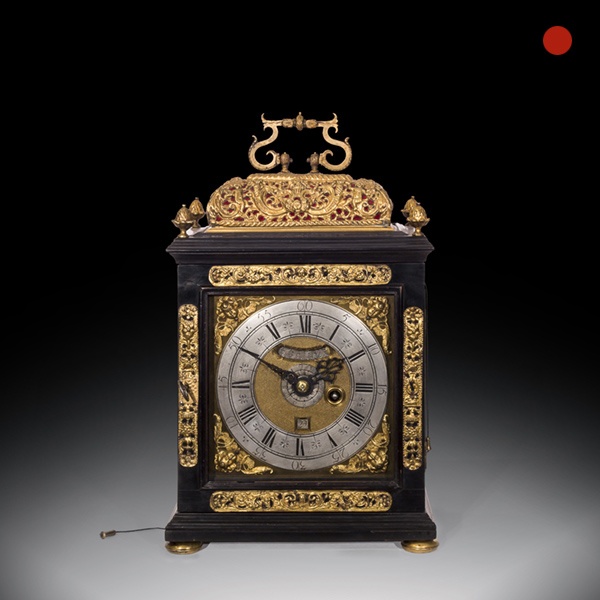
17th-Century Ebony Veneered Table Clock with Alarm and Pull Quarter Repeat
A magnificent sprung driven table clock by respected London maker George Etherington. The late 17th century, ebony- veneered table clock with alarm and pull quarter repeat on two bells, signed on the chapter ring Etherington London, and on the backplate Geo Etherington LONDON, c. 1695-1700.

Chinese Cloisonne Enamel Censer Modelled as a Crane 18/19th Century Qing Dynasty
The characterful and charming 18/19th-century cloisonne enamel censer, is modelled as a crane with straight gilt-metal legs, realistically detailed feet and claws, standing on a detailed gilt base. The neck gracefully curved above the plump hollow body brightly enamelled in turquoise.
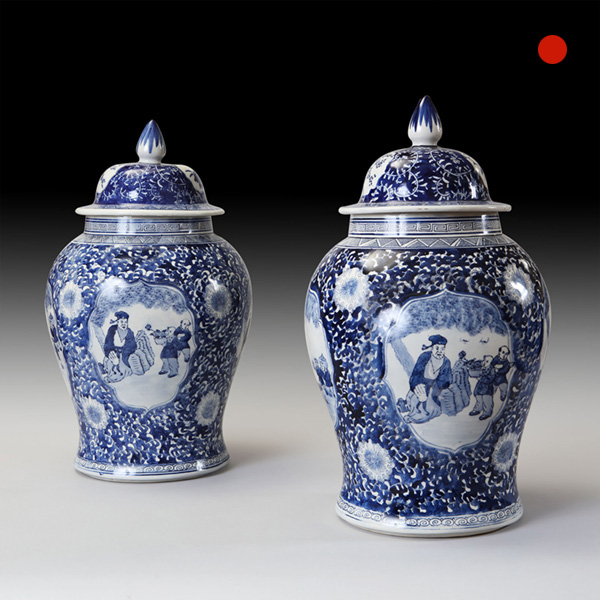
Large Pair of Blue and White Baluster Vases and Covers
Each jar is decorated with four reserves on a ground of scrolling flowers. The domed covers are surmounted by a finial. LATE QING DYNASTY (1644-1911).

George III Red Tortoiseshell Tea Caddy
A rare exquisitely shaped red tortoiseshell tea caddy, serpentine to all four faces with a pagoda top. The beautifully worked silver handle depicts the Prince of Wales feathers and it is raised on fine ball and claw feet of silver.

19th-Century Quarter-striking Carriage Clock by Leroy, Paris
The gilt-brass, so-called corniche case has bevelled glass panels on all sides so that the movement is entirely visible. It is surmounted by a shaped carrying handle. The white enamel dial has a Roman chapter ring, with Arabic five-minute and minute divisions.

Louis XV Style French Lantern
A superb large French brass lantern of Louis XV style, 19th century. The five light chandelier within a cylindrical lantern cast with scrolling acanthus, shells and vase-shaped finials with serpentine glazed panels, fitted for electricity.

17th-Century Ebony Veneered Table Clock with Alarm and Pull Quarter Repeat
A magnificent sprung driven table clock by respected London maker George Etherington. The late 17th century, ebony- veneered table clock with alarm and pull quarter repeat on two bells, signed on the chapter ring Etherington London, and on the backplate Geo Etherington LONDON, c. 1695-1700.

Chinese Cloisonne Enamel Censer Modelled as a Crane 18/19th Century Qing Dynasty
The characterful and charming 18/19th-century cloisonne enamel censer, is modelled as a crane with straight gilt-metal legs, realistically detailed feet and claws, standing on a detailed gilt base. The neck gracefully curved above the plump hollow body brightly enamelled in turquoise.

Large Pair of Blue and White Baluster Vases and Covers
Each jar is decorated with four reserves on a ground of scrolling flowers. The domed covers are surmounted by a finial. LATE QING DYNASTY (1644-1911).
YOU MAY ALSO LIKE
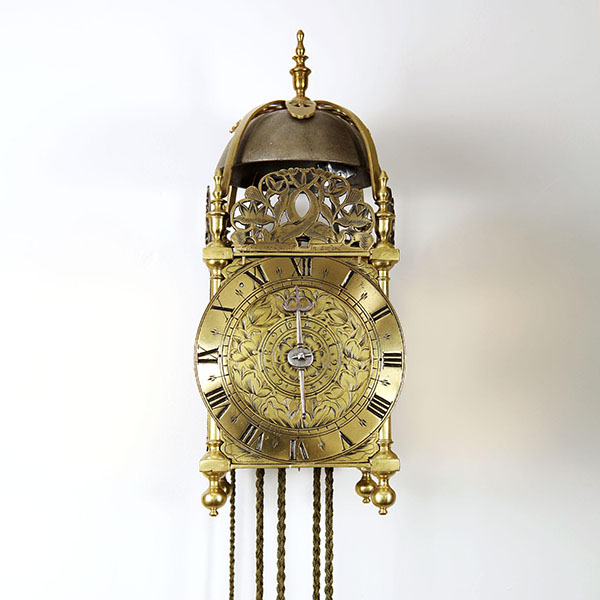
17th Century Lantern Alarm Clock by Johannes Quelch, Oxford
17th Century Lantern Alarm Clock by Johannes Quelch, Oxford £14,000Follow Us17th Century Lantern Alarm Clock by Johannes Quelch, Oxford An English 17th century lantern clock made of brass and iron, circa 1665-1670. The clock consists of going...

19th-Century Flame Mahogany Mantel Clock by BREGUET Raised by Lion Paw Feet
19th-Century Flame Mahogany Mantel Clock by BREGUET Raised by Lion Paw Feet £23,500Follow Us19th-Century Flame Mahogany Mantel Clock by BREGUET Raised by Lion Paw Feet EXTREMELY RARE MANTEL CLOCK WITH A FIGURED MAHOGANY-VENEERED CASE by A-L...

Unusual Ribbed Eight-Day Repeating Striking Gilt-Brass Gorge Case Carriage Clock
Unusual Ribbed Eight-Day Repeating Striking Gilt-Brass Gorge Case Carriage Clock £4,850Follow UsUnusual Ribbed Eight-Day Repeating Striking Gilt-Brass Gorge Case Carriage Clock CaseThe clock has a gilt-brass case which is a variation on the...
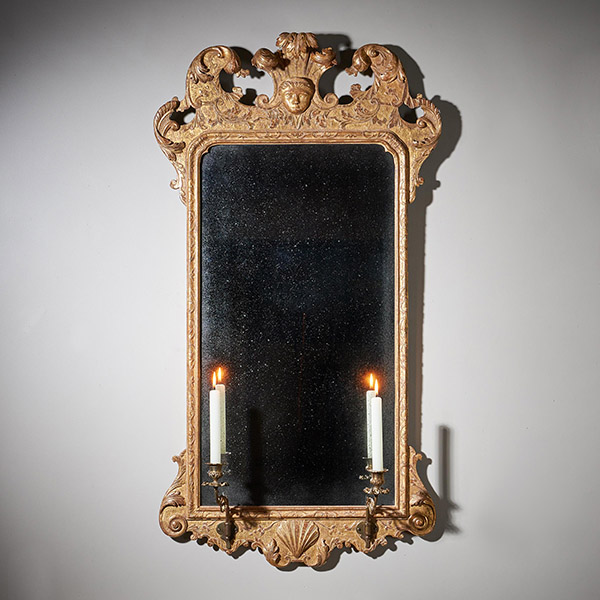
Fine 18th Century George I Gilt Gesso Pier or Console Mirror, Manner of Belchier
Fine 18th Century George I Gilt Gesso Pier or Console Mirror, Manner of Belchier £13,900Follow UsFine 18th Century George I Gilt Gesso Pier or Console Mirror, Manner of Belchier A fine and rare early 18th century George I Gilt Gesso pier or...

17th Century William and Mary Olive Oyster Lace Box, Circa 1680-1700
17th Century William and Mary Olive Oyster Lace Box, Circa 1680-1700 £3,900Follow Us17th Century William and Mary Olive Oyster Lace Box, Circa 1680-1700 A fine and rare 17th-century William and Mary period olive oyster lace box of perfect...
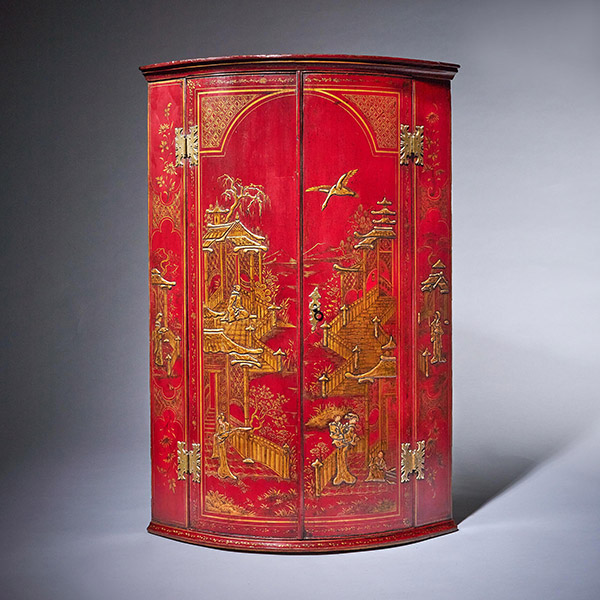
18th Century George II Scarlet-Red Japanned Corner Cupboard Att. Giles Grendey
18th Century George II Scarlet/Red Japanned Corner Cupboard, Att. Giles Grendey Follow Us18th Century George II Scarlet/Red Japanned Corner Cupboard, Att. Giles Grendey A fine and rare early 18th century George II scarlet japanned chinoiserie...

17th Century Lantern Alarm Clock by Johannes Quelch, Oxford
17th Century Lantern Alarm Clock by Johannes Quelch, Oxford £14,000Follow Us17th Century Lantern Alarm Clock by Johannes Quelch, Oxford An English 17th century lantern clock made of brass and iron, circa 1665-1670. The clock consists of going...

19th-Century Flame Mahogany Mantel Clock by BREGUET Raised by Lion Paw Feet
19th-Century Flame Mahogany Mantel Clock by BREGUET Raised by Lion Paw Feet £23,500Follow Us19th-Century Flame Mahogany Mantel Clock by BREGUET Raised by Lion Paw Feet EXTREMELY RARE MANTEL CLOCK WITH A FIGURED MAHOGANY-VENEERED CASE by A-L...

Unusual Ribbed Eight-Day Repeating Striking Gilt-Brass Gorge Case Carriage Clock
Unusual Ribbed Eight-Day Repeating Striking Gilt-Brass Gorge Case Carriage Clock £4,850Follow UsUnusual Ribbed Eight-Day Repeating Striking Gilt-Brass Gorge Case Carriage Clock CaseThe clock has a gilt-brass case which is a variation on the...

Fine 18th Century George I Gilt Gesso Pier or Console Mirror, Manner of Belchier
Fine 18th Century George I Gilt Gesso Pier or Console Mirror, Manner of Belchier £13,900Follow UsFine 18th Century George I Gilt Gesso Pier or Console Mirror, Manner of Belchier A fine and rare early 18th century George I Gilt Gesso pier or...

17th Century William and Mary Olive Oyster Lace Box, Circa 1680-1700
17th Century William and Mary Olive Oyster Lace Box, Circa 1680-1700 £3,900Follow Us17th Century William and Mary Olive Oyster Lace Box, Circa 1680-1700 A fine and rare 17th-century William and Mary period olive oyster lace box of perfect...

18th Century George II Scarlet-Red Japanned Corner Cupboard Att. Giles Grendey
18th Century George II Scarlet/Red Japanned Corner Cupboard, Att. Giles Grendey Follow Us18th Century George II Scarlet/Red Japanned Corner Cupboard, Att. Giles Grendey A fine and rare early 18th century George II scarlet japanned chinoiserie...






